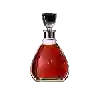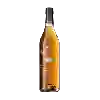
Winery Terres des TempliersLa Légende des Grands Banyuls
This wine generally goes well with beef and mature and hard cheese.
Food and wine pairings with La Légende des Grands Banyuls
Pairings that work perfectly with La Légende des Grands Banyuls
Original food and wine pairings with La Légende des Grands Banyuls
The La Légende des Grands Banyuls of Winery Terres des Templiers matches generally quite well with dishes of beef or mature and hard cheese such as recipes of cataplana with seafood or cheese fondue.
Details and technical informations about Winery Terres des Templiers's La Légende des Grands Banyuls.
Discover the grape variety: Florental
Florental noir is a grape variety that originated in . This variety is the result of a cross between the same species (interspecific hybridization). It produces a variety of grape specially used for wine making. It is rare to find this grape for eating on our tables. The Florental noir is found in the vineyards of the Rhône Valley.
Informations about the Winery Terres des Templiers
The Winery Terres des Templiers is one of of the world's great estates. It offers 98 wines for sale in the of Banyuls to come and discover on site or to buy online.
The wine region of Banyuls
Banyuls wines come from the South-eastern Part of Roussillon, in the south of France, in the lower Pyrenees, a few kilometres from the Spanish border. These naturally Sweet wines are consumed both as an aperitif and as a dessert. They come in a wide range of hues, from GoldenGreen (Banyuls Blanc) to Amber (Banyuls Ambré) to the intense garnet of the standard Banyuls Rouge. Unusually among the natural sweet wines of France, all Banyuls wines are made primarily from Grenache grapes of various colors.
The wine region of Languedoc-Roussillon
Languedoc (formerly Coteaux du Languedoc) is a key appellation used in the Languedoc-Roussillon wine region of southern France. It covers Dry table wines of all three colors (red, white and rosé) from the entire region, but leaves Sweet and Sparkling wines to other more specialized appellations. About 75% of all Languedoc wines are red, with the remaining 25% split roughly down the middle between whites and rosés. The appellation covers most of the Languedoc region and almost a third of all the vineyards in France.
The word of the wine: Bordeaux barrel
Barrels of 220 to 225 litres. The toasting of the barrel to bend the staves (curved boards used to make the barrels) can vary according to the coopers and the demand. A gentle and slow toasting has little effect on the aromas. On the other hand, a strong toasting gives aromas of coffee or cocoa which will influence the taste of the wine. A wine barrel has already been aged for a year and has less impact on the wine than a new barrel.













